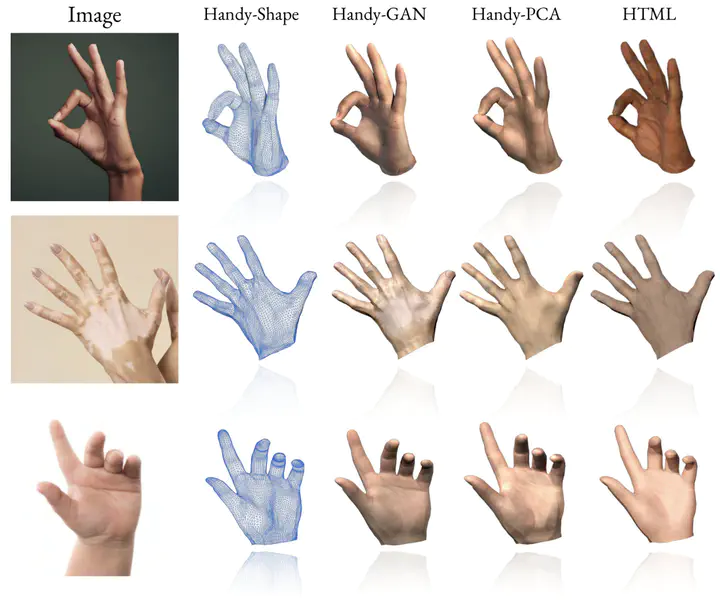
Abstract
Over the last few years, with the advent of virtual and augmented reality, an enormous amount of research has been focused on modelling, tracking and reconstructing human hands. Given their power to express human behaviour, hands have been a very important, but challenging component of the human body. Currently, most of the state-of-the-art reconstruction and pose estimation methods rely on the low polygon MANO model. Apart from its low polygon count, MANO model was trained with only 31 adult subjects, which not only limits its expressive power but also imposes unnecessary shape reconstruction constraints on pose estimation methods. Moreover, hand appearance remains almost unexplored and neglected from the majority of hand reconstruction methods. In this work, we propose “Handy”, a large-scale model of the human hand, modelling both shape and appearance composed of over 1200 subjects which we make publicly available for the benefit of the research community. In contrast to current models, our proposed hand model was trained on a dataset with large diversity in age, gender, and ethnicity, which tackles the limitations of MANO and accurately reconstructs out-of-distribution samples. In order to create a high quality texture model, we trained a powerful GAN, which preserves high frequency details and is able to generate high resolution hand textures. To showcase the capabilities of the proposed model, we built a synthetic dataset of textured hands and trained a hand pose estimation network to reconstruct both the shape and appearance from single images. As it is demonstrated in an extensive series of quantitative as well as qualitative experiments, our model proves to be robust against the state-of-the-art and realistically captures the 3D hand shape and pose along with a high frequency detailed texture even in adverse “in-the-wild” conditions.